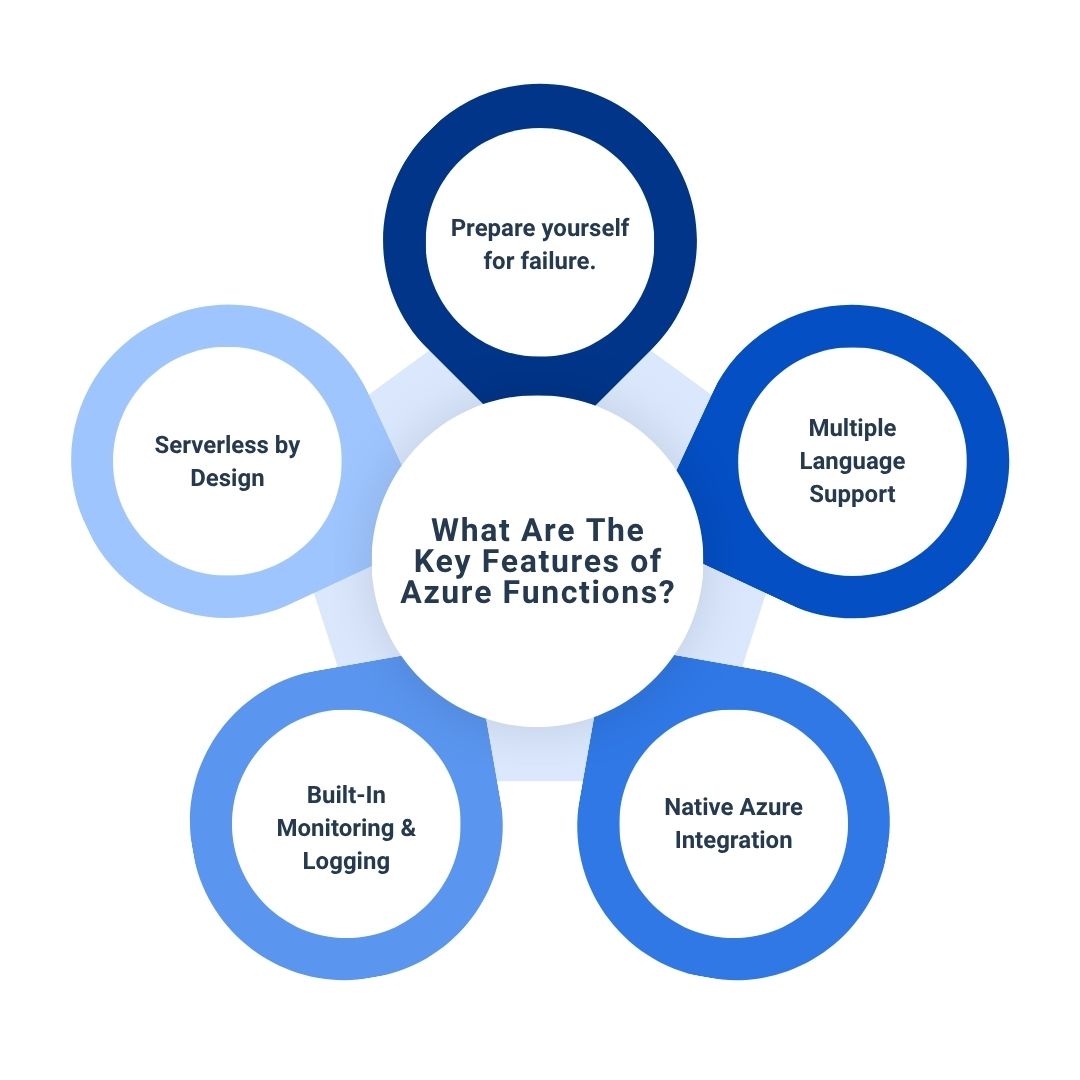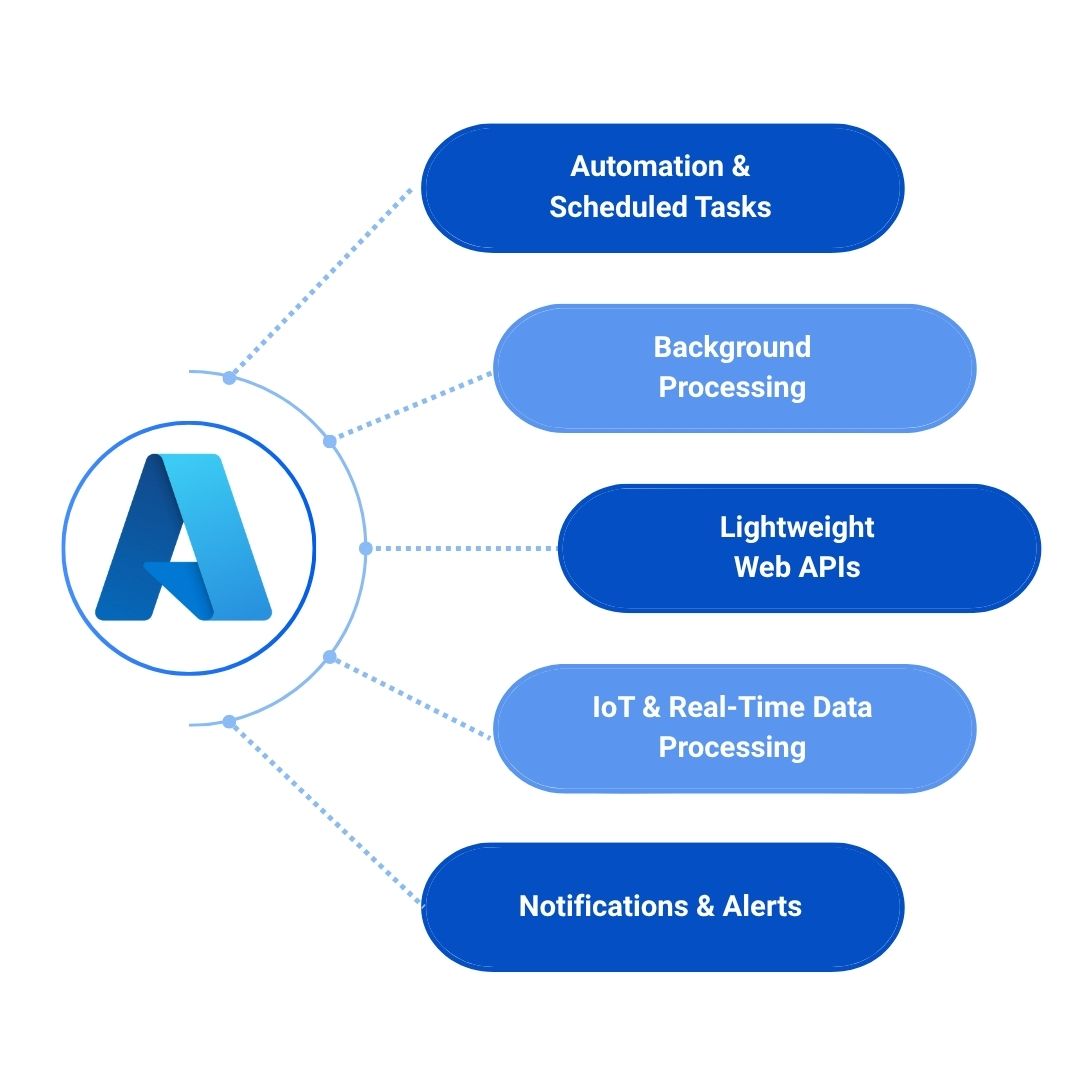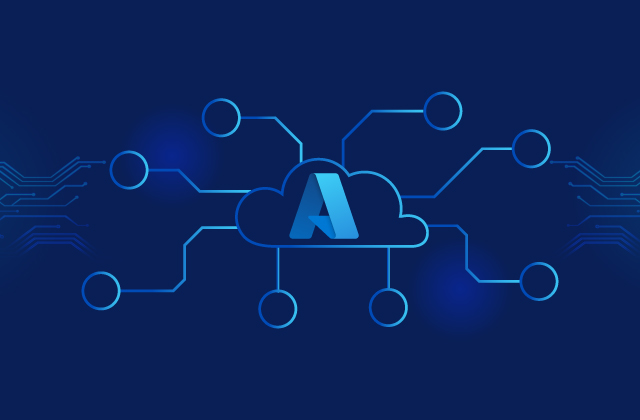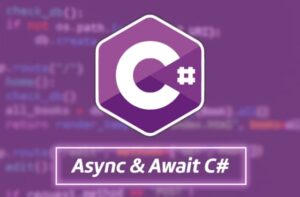What Are Microsoft Azure Functions?
Why Choose Azure Functions?
-
Cost Efficiency
-
Event-Driven Architecture
- HTTP requests
- Timer-based schedules (similar to CRON jobs)
- Blob storage uploads
- Queue messages
- Cosmos DB changes
- Event Grid and Service Bus events
This makes them a perfect choice for reactive and loosely-coupled systems.
-
Flexible Development Options
-
Seamless Scalability
Want to Leverage Azure Functions for Your Business?
What Are The Key Features of Azure Functions?

-
Event-Driven Programming
- HTTP requests
- Scheduled timers
- Queue messages
- Blob/file uploads
- Database changes
-
Multiple Language Support
- C#
- JavaScript/Node.js
- Python
- Java
- PowerShell
- TypeScript
-
Native Azure Integration
- Azure Blob Storage
- Azure Cosmos DB
- Service Bus
- Event Hubs
- Microsoft Graph
- External REST APIs
-
Built-In Monitoring & Logging
-
Serverless by Design
Being serverless, Azure Functions eliminate the need for infrastructure management. They offer high availability, and quick deployment cycles, and allow developers to focus purely on writing business logic.
Popular Use Cases for Azure Functions in Modern Applications

-
Automation & Scheduled Tasks
- Data synchronization
- Scheduled backups
- Daily report generation
- Sending automated emails
-
Background Processing
- Image or file processing
- Data transformation
- Sending emails
- Complex backend calculations
-
Lightweight Web APIs
-
IoT & Real-Time Data Processing
-
Notifications & Alerts
Getting Started: Creating Your First Azure Function
- Log in to Azure Portal: Start by signing into your Azure account.
- Create a Function App: Choose your resource group, region, and storage account.
- Choose Runtime Stack: Select from .NET, Node.js, Python, etc.
- Set Hosting Options: Configure plan (consumption or premium) and monitor.
- Create a Function: Choose a trigger (HTTP, Timer, Queue, etc.).
- Write Your Code: Use the built-in editor or develop locally and deploy.
- Deploy: Use CI/CD tools like GitHub Actions or Azure DevOps for seamless deployment.
Real-World Example: Order Confirmation Email
Imagine an e-commerce platform needing to send confirmation emails after orders. Instead of building this into the core application:
- Create a function dedicated to email processing.
- Trigger it through a message queue or Cosmos DB change.
- Pull order data and send a confirmation email.
Use Case
Azure Functions in Event Management
Conclusion
Azure Functions simplify the development of scalable, event-driven applications by handling the underlying infrastructure. With broad language support, deep Azure integration, and seamless scalability, developers can focus on building intelligent, responsive applications. Whether it’s automation, APIs, IoT, or microservices, Azure Functions offer a flexible and cost-effective path to serverless computing.
Start exploring Azure Functions today and harness the full power of serverless development!





